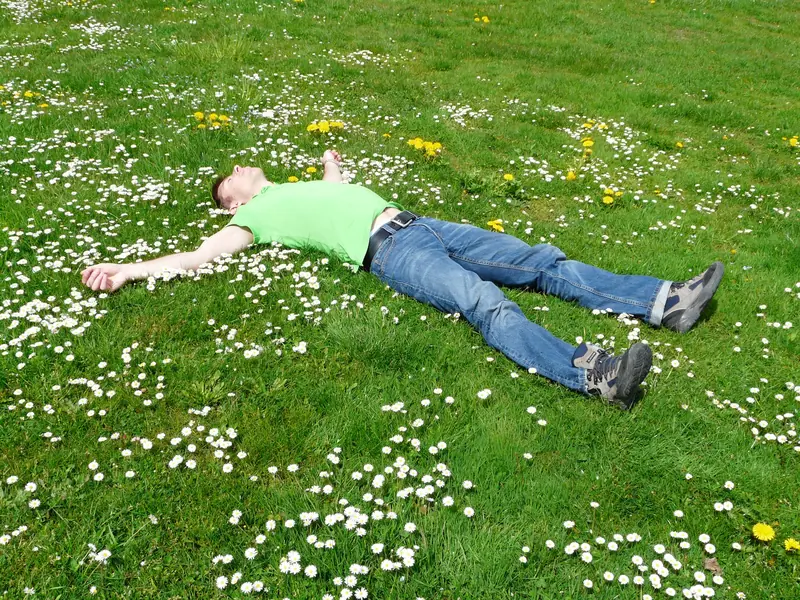
Many are familiar with this strange dissonance: more warmth and sunshine, yet less energy and enthusiasm. What lies behind this inexplicable shift in emotions, irritability, fatigue, and the inability to focus or relax?
Anxiety Syndrome
This springtime issue, which lacks physical indicators for treatment, cannot be dismissed as “imaginary.” Behind these destructive mental reactions are invisible processes that hinder productivity. You heroically force yourself to leave the house, only to return halfway to your destination, feeling confused and uneasy. You cancel plans in a state of emptiness and collapse onto your pillow instead of tackling your “to-do” list. It’s not so much the fear of the consequences of “skipping out” that troubles you, but rather this mysterious feeling that disrupts communication and problem-solving. Psychologists refer to it as anxiety syndrome.
Unlike physiological anxiety, which is a healthy response to a real threat, anxiety is an unconscious worry. While the former mobilizes the body’s resources to prevent an undesirable situation, the latter disorganizes: a person becomes paralyzed, unable to make the simplest decision—whether to step outside or stay home.
This “spring turbulence” can complicate life with distractibility, forgetfulness, fatigue, migraines, irritability, insomnia, rapid heartbeat, and psychosomatic symptoms. Patients visit doctors complaining of back, lower back, stomach, or heart pain, only to be referred to neurologists, psychiatrists, and psychologists. It is these “soul experts” who uncover the reasons behind symptoms that seem unrelated to their field: the same muscle tension turns out to be a consequence of chronic stress and constant strain.
At-Risk Groups
Those with unstable mental health are particularly susceptible to spring anxiety disorders. Their comfort comes from a familiar rhythm of life and known situations. Having adapted to the monotonous conservatism of winter, these individuals can feel lost in the face of the increased intensity of new tasks come spring. This is not only due to the surge in business and social activities during this time of year. Even changes in diet, weather, and seasonal wardrobes can trigger panic attacks. Increased sunlight and the blossoming of nature can serve as triggers for sudden anxiety and disorientation. The scorching rays and blooming plants pose a significant challenge for those with light sensitivity and pollen allergies.
The transitional seasons can act as a catalyst for the development of neuroses in insecure, sensitive, emotional individuals and patients suffering from chronic fatigue. Workaholics, perfectionists, and those with self-doubt all raise their stress levels due to the fear of losing control over events and failing to meet challenges.
Anxiety manifests in obsessive thoughts about how one is perceived and pessimistic expectations, along with a false sense of negative judgment and hostility from the world. This gloomy mood is often coupled with a desire for frenetic activity. People become restless and impatient, struggle to sleep, and find it hard to stay still (fingers and knees “dance,” hands, legs, cheeks, or eyes twitch). Some try to mask their growing unease with excessive chatter, while others withdraw into apathy, and still others display aggression over trivial matters. Triggers can include unpleasant sounds: phone calls, loud conversations, children’s screams, sirens, the TV blaring, and disruptive music.

Neurosis or Dystonia?
This “spring” syndrome can also be referred to as autonomic dysfunction. While neurosis is a disorder of the central nervous system, vegetative-vascular dystonia is a malfunction of the autonomic nervous system. Anxiety is a common trait of both. Symptoms manifest in tandem, as one disorder triggers another.
A patient may experience weakness, lethargy, fatigue, irritability, anxiety, tearfulness, and heightened sensitivity to weather changes. In cases of VSD (vegetative-vascular dystonia), sleep and wakefulness patterns are disrupted, leading to night terrors, dizziness, blood pressure fluctuations, and pain in the ribs, back, neck, heart, intestines, and stomach. Some cases of VSD are complicated by signs of mental disorders. Derealization in the medical history indicates the brain’s reaction to stress, where the surrounding environment feels distant and unreal.
A complication of VSD can be an autonomic crisis—a sudden attack characterized by a massive system failure: sweating, drowsiness, pallor, a feeling of suffocation, panic attacks (a sense of impending doom), tachycardia, and sharp fluctuations in blood pressure. In such a state, a person may completely lose their ability to function: they might even struggle to detect a pulse.
Causes can often be traced back to hereditary factors (VSD can manifest from an early age), past infections and intoxications, overwork, chronic stress, and emotional burdens. Statistically, up to 80% of people worldwide are familiar with VSD, and one in three requires qualified treatment.
What to Do During a Flare-Up?
Autonomic and nervous disruptions require prevention and correction: patients should be monitored by a doctor in the spring and fall. Treatment may include magnetic stimulation, massage, and physical therapy. Patients are prescribed medications to strengthen the nervous system and normalize vitamin and mineral balance. Along with vitamin complexes, antidepressants, tranquilizers, antispasmodics, and neuroleptics are often prescribed.
For trembling, numbness in the hands and feet, migraines, palpitations, and anxiety, it’s essential to relax the muscles of the back and shoulders by finding a comfortable position and taking a calming or sedative. Drink warm tea with honey and lemon, or infusions of mint, lemon balm, chamomile, or valerian root. Spring flare-ups can be alleviated with herbal teas, fresh juices, and fruit drinks. Doctors recommend staying hydrated: aim for at least 1.5 liters of pure (preferably natural mineral) water daily.
Walking with your eyes closed, on tiptoes, twisting your torso, rotating your wrists, and making circular movements with your arms can be beneficial. It’s important to spend more time outdoors, swim, maintain a moderate lifestyle, and eat healthily: choose foods rich in iron, potassium, and magnesium.

Stop living at the expense of your health. Let go of the burden of excessive responsibility and the need to meet others’ expectations. Replace “have to” with “want to” in your mindset. Psychologists teach us to listen to our own desires. Don’t sweat the small stuff and free yourself from the world’s sorrows: humanity will always have problems, and your life is finite. Personal grievances won’t change anything. By regretting the past and worrying about the future, we lose the joy of the present. Strive to find pleasure in what interests you here and now.
